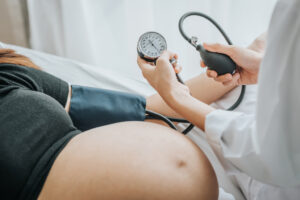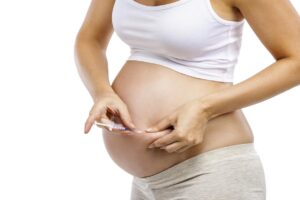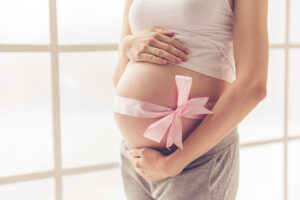Ectopic pregnancy happens in about 1 in 100 pregnancies and one third of women will not have a risk factor for developing this type of pregnancy. Common risk factors are those that cause damage to the fallopian tubes such as a history of infection, endometriosis or previous ectopic pregnancy.
Symptoms of ectopic pregnancy include pain and bleeding. The pain is often sharp and located in the lower left or right side of the abdomen. Other symptoms include nausea, diarrhoea, dizziness/fainting and shoulder-tip pain.
Diagnosis of ectopic pregnancy is made using transvaginal (internal) ultrasound and blood tests to check hcg (pregnancy hormone level). Bloods are checked 48 hours apart and a less than 60% rise in the level is associated with ectopic pregnancy. For example, the first level might be 600 and the second level 800, 48 hours later. It can be difficult to diagnose an ectopic pregnancy and more than one visit may be needed. On ultrasound a pregnancy sac is not present in the uterus (womb) but may be seen in the tube, adjacent to the ovary.
Treatment for ectopic pregnancy is based on your symptoms, hcg level and ultrasound findings. Some women will be offered treatment with methotrexate an intramuscular injection. Others will be advised to have surgery.
If you are having methotrexate you will have blood tests first to check liver function and your blood group. If you are rhesus negative you will be given anti-D if you are having treatment for an ectopic pregnancy. Common side effects of methotrexare include bleeding gum and mild abdominal pain. You will be advised to attend the hospital if you have severe abdominal pain as this can be a sign of bleeding from a tear in the fallopian tube. This happens in <15% of women treated with methotrexate and requires surgery. Blood tests to hcg are done on day 4 and day 7 after the injection. If there is a >15% drop in the level the injection is working. You will have further blood tests until the level goes back to <1.0 (negative). You shouldn’t conceive for 3 months after methotrexate because it can cause birth defects.
If you are having surgery it is usually laparoscopic (key-hole) and you will either go home the same day or the day after surgery. This involves a general anaethetic. The damaged tube with the ectopic pregnancy is usually removed. If you only have one tube or the other one is damaged it may be possible to open the tube with the ectopic pregnancy rather than removing it. However if this is done you may need further treatment with methotrexate or another surgery and you will need a follow up hcg blood tests a week after surgery.
After an ectopic pregnancy, you will have bleeding for 1-2 weeks and your next period will be within 3-6 weeks. You should contact your GP/ hospital’s early pregnancy unit when you get pregnant again so that they can make sure the pregnancy is located in the womb and not another ectopic pregnancy in the tube.






